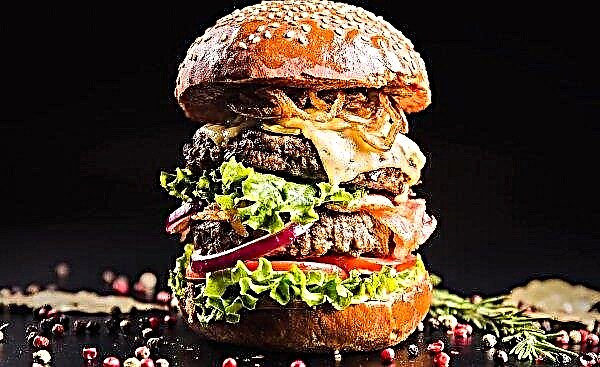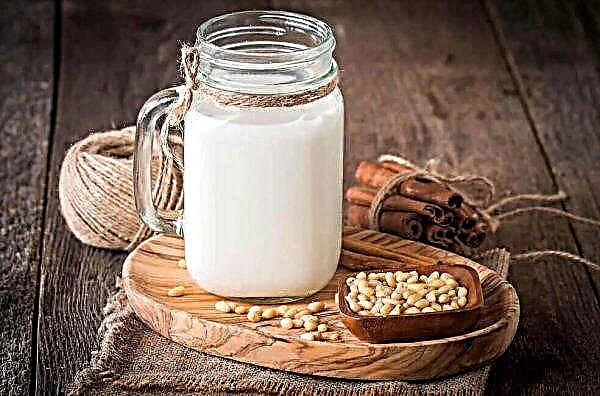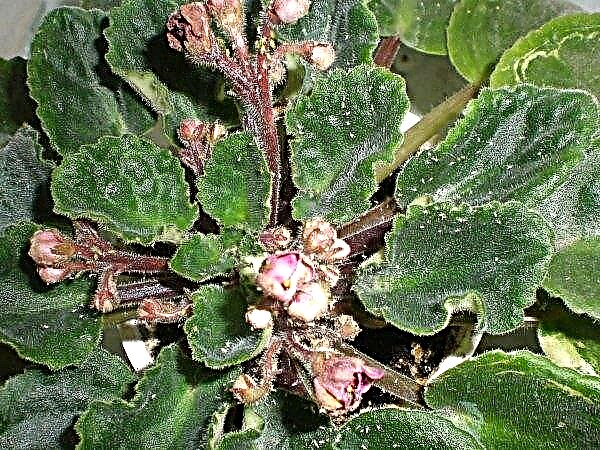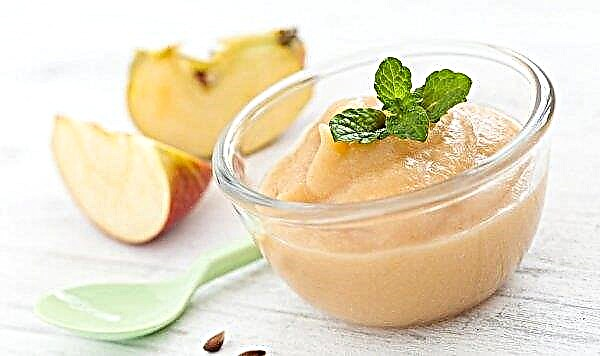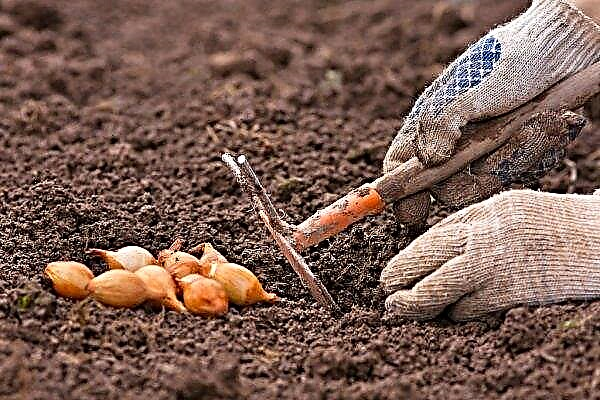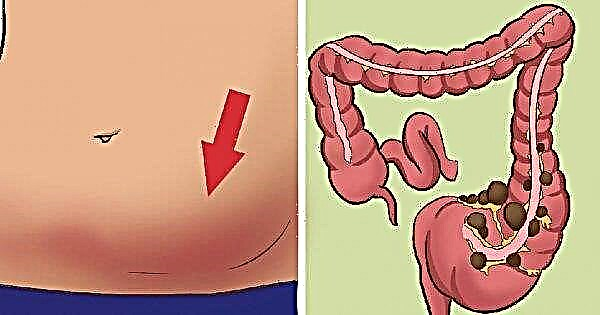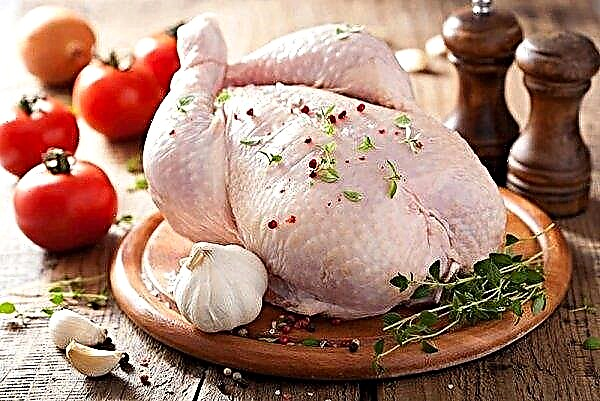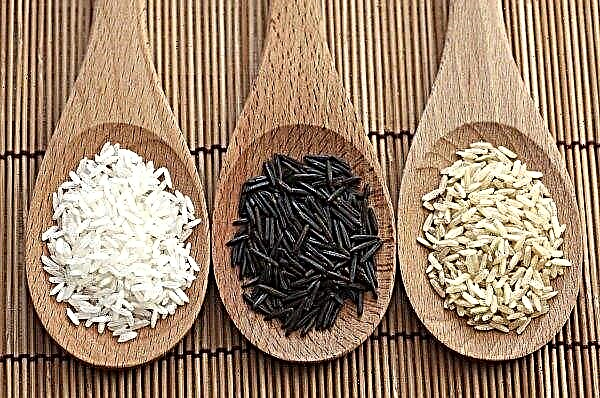Meat and quail eggs have healing properties, so raising a bird brings good profit. The farmer’s everyday life can be overshadowed by diseases to which birds are exposed. How to find out the kind of disease, cure it, and also what preventive measures exist - this is in the article today.
Description and methods of treating diseases
Better to prevent the disease than to lose the livestock, as some diseases cannot be treated. In this case, it remains only to dispose of the infected herd.
Infectious (infectious)
Infections are transmitted from individual to individual and destroy the entire herd in a matter of days if no action is taken. Next, we consider how to recognize the symptoms of that other disease.
Newcastle disease, or pseudo-plague
The disease is transmitted through the contact of a sick and healthy individuals, an egg, droppings, feathers.

You can diagnose the disease based on the following symptoms:
- increase in body temperature;
- wheezing
- the smell of rot from the oral cavity and mucous membranes;
- lethargy;
- blood in the stool;
- enlarged area of goiter.
No treatment has yet been found. All livestock is destroyed, disposed of and the premises are disinfected.
Pullorosis
The disease appears as a result of infection of the chicks through the mother's egg, the carrier is Salmonella. Pullorosis is a fatal infection, infected individuals are knocked out and disposed of. After that, it is necessary to conduct a detailed blood test of the entire adult herd in order to reject the carrier of the infection.

You can recognize the ailment by the following signs:
- lack of coordination of movement;
- the chicks bend their legs;
- hard breath;
- feces in the form of whitish mucus;
- the feathers around the cloaca are dirty and clumpy;
- it hurts the birds to look at the light.
Important! To prevent infection of the chicks through the eggshell, eggs are treated with formaldehyde steam in poultry farms.
Aspergillosis
The cause of the disease is a fungus. Diagnosis of the disease in adults is difficult, because it is asymptomatic.
In the younger age group of birds, the following symptoms are observed:
- lack of activity;
- hard breath;
- constant thirst in the absence of appetite;
- discharge from the nostrils;
- blue skin and beak.

During treatment, veterinarians prescribe drugs that destroy the fungus, for example, Clotrimazole, Nystatin. Apply antibiotics and vitamin therapy.
Salmonellosis
Infection occurs when sanitary standards are not followed and affects the digestive organs. Adult specimens may not be sick, but be carriers. Young animals are susceptible to infection.
Symptoms
- apathy and drowsiness;
- indigestion and vomiting;
- persistent diarrhea (dehydration);
- the bird is irritable.

Dispose of the infected group. After the studies, carriers are identified and sealed with drugs (Avidox, Avelox, Eriprim). Mandatory disinfection of the entire room and equipment.
Colibacillosis
Bowel disease provokes severe hypothermia, young animals are more often ill.
Symptoms are similar to the above-described pullorosis:
- blue feet and beak;
- diarrhea with mucus;
- dirty cloaca area;
- loss of appetite and constant desire to drink.
Accordingly, when revealing the first signs for an accurate diagnosis, a veterinarian should be called. Unlike pullorosis, colibacteriosis can be cured by preserving the livestock. It is considered effective to solder the herd with Enronit.Important! Dosages of drugs are prescribed only by a veterinarian. Usually, the bird is soldered with medicine, dissolving it in water.
Non-infectious
Not contagious diseases bring no less concern to the farmer and harm to the bird.
Fractures and injuries
Quail is a miniature and cowardly creature: due to the slightest noise, the birds begin to move sharply, try to fly up or jump up, resulting in injuries of varying severity.
External signs are swollen parts of the body in an injured place, the presence of a sacrum. The movement of the bird is difficult, in pain, the birds refuse to eat.

An open wound should be accessible, feathers are cut. Then the wound is disinfected and bandaged. Dislocation or fracture requires the application of a tire.
Pecking, or cannibalism
An anomaly is not a disease in the literal sense of the word; rather, it is a behavioral feature of birds.
Such factors can provoke aggression:
- lack or excess of lighting;
- tightness in the aviary;
- rivalry over drinking bowls and feeders;
- poor diet;
- poor quality feed;
- demonstration of the strength of sexually mature males.
The wounds on the body of the oppressed individuals are easy to notice, the feathers can be stained with blood or have traces of dried up anemone. They need to be disinfected.

All mistakes made in the content and nutrition should be corrected. Aggressors are removed from the herd, isolating in a separate cage. If abnormal behavior continues, the bird is killed.
Video: Biting at quail
Hypovitaminosis
This condition is an insufficient intake of vitamins in the body of a bird compared to the amount consumed.
Signs of the disease can be very different, since hypovitaminosis affects all body systems:
- feather loss;
- eye diseases (conjunctivitis);
- diarrhea, vomiting, lack of appetite;
- loss of coordination or bowing of the head;
- developmental stop (young growth);
- decrease in egg production.
Did you know? In Japan, knowing the properties of quail eggs to improve brain function and concentration, the product is given daily to schoolchildren for breakfast.
The only form of treatment is dietary correction. Since hypovitaminosis can be both a complex lack of vitamins and selective, a veterinarian should do this.
Oviduct prolapse
In young laying hens, the cause of the pathology is early puberty on well-fed, but not high-quality feeds. In adults, quailing can be triggered by a lack of vitamins A, D. Loss can be seen with the naked eye, while the bird loses its appetite, sits, with a cracked tongue.

It is impossible to cure this problem, you can only warn. To do this, when compiling a menu for young and adult individuals, you need to adhere to the needs of birds of the appropriate age. Do not forget about the inclusion of vitamins and minerals in the diet.
Shell deformation
A strong egg shell in a layer forms a sufficient amount of minerals, especially calcium. Vitamin-mineral imbalance provokes thinning of the shell.
The treatment is to add such products to the menu:
- shell rock;
- a piece of chalk;
- fresh greens;
- fish fat;
- vitamin E.
Important! Quail water should not contain large amounts of salts: this is fraught with health problems.
Focal feather loss
The causes of baldness are:
- avitaminosis;
- parasites;
- sudden changes in temperature.
- illnesses.
The treatment will be the elimination of possible causes. In the room you need to caulk all the cracks to eliminate drafts. It is important to verify the absence of diseases, parasites.

Vitamins and minerals should be added to the diet:
- retinol;
- fish fat;
- Proteins
- amino acids;
- sulfur;
- iodine.
Parasitic
Parasitic diseases most often occur due to non-compliance with sanitary standards. They can also be transmitted by wild birds.
Mallofagosis
The cause of the disease is a fluffer, a small parasite. The insect eats on scales of feathered skin, which causes them to itch and self-biting. You can notice it by the loss of feathers and traces of blood or anemia.

Winged animals are treated with insecticides, for example, such:
- Arpalit;
- "Butox";
- "Insectol".
When applying, you need to protect your eyes and exclude contact with the oral mucosa.
Syngamosis
This is a defeat of a round worm (nematode) of the respiratory system and larynx of birds.
Did you know? In 1990, the quail hatched in space at the Mir station. They became the first living creatures born in outer space, but, unfortunately, could not adapt to zero gravity and died.
The disease manifests itself with such signs:
- wheezing
- choking cough with mucus;
- loss of appetite and weight;
- dull plumage.
The treatment should be prescribed by a veterinarian, mainly they use anthelmintic drugs (Flubenvet, Panakur).
Disease prevention
Diseases cause damage to industries and private farmers, therefore it is easier to follow a number of measures to prevent illnesses.

Prevention measures:
- Aviaries or walking grounds should be protected from rodents and wild birds.
- The room should be warm, lighted, spacious and dry.
- Regularly need to ventilate: stale air - the habitat of bacteria.
- For livestock there should be enough feeders and drinking bowls.
- Quail, like chickens, love to swim in ash baths, this is a good measure to prevent the appearance of parasites. You can also add repellents to the grass litter: wormwood, chamomile.
- The premises are regularly cleaned and disinfected, the same applies to equipment and poultry dishes.
- When servicing birds, the employee or owner must have replaceable clothes and shoes.
- The newly acquired chicks are kept in quarantine for some time to identify a possible infection and to prevent infection of the remaining individuals.
- It is advisable to check with the veterinarian for the diet for young and adult birds in order to balance the beneficial substances. Feed must be fresh and of good quality.
- Be sure to vaccinate the livestock.
- It is advisable for chicks to give probiotics to normalize digestion when switching to coarser foods.
- There should not be sources of noise near the quail - premises with large animals, roads, playgrounds.
- When servicing a quail, do not speak loudly or make sudden movements.
- To avoid injury, it is advisable to stretch a soft mesh under the mesh ceiling of the aviary as a stop.
Video: Quail Content
The health of the bird depends on the conscious actions of the breeder: the more carefully he treats the conditions of detention, compliance with sanitary standards, nutrition and well-being of the wards, the more returns they receive.

